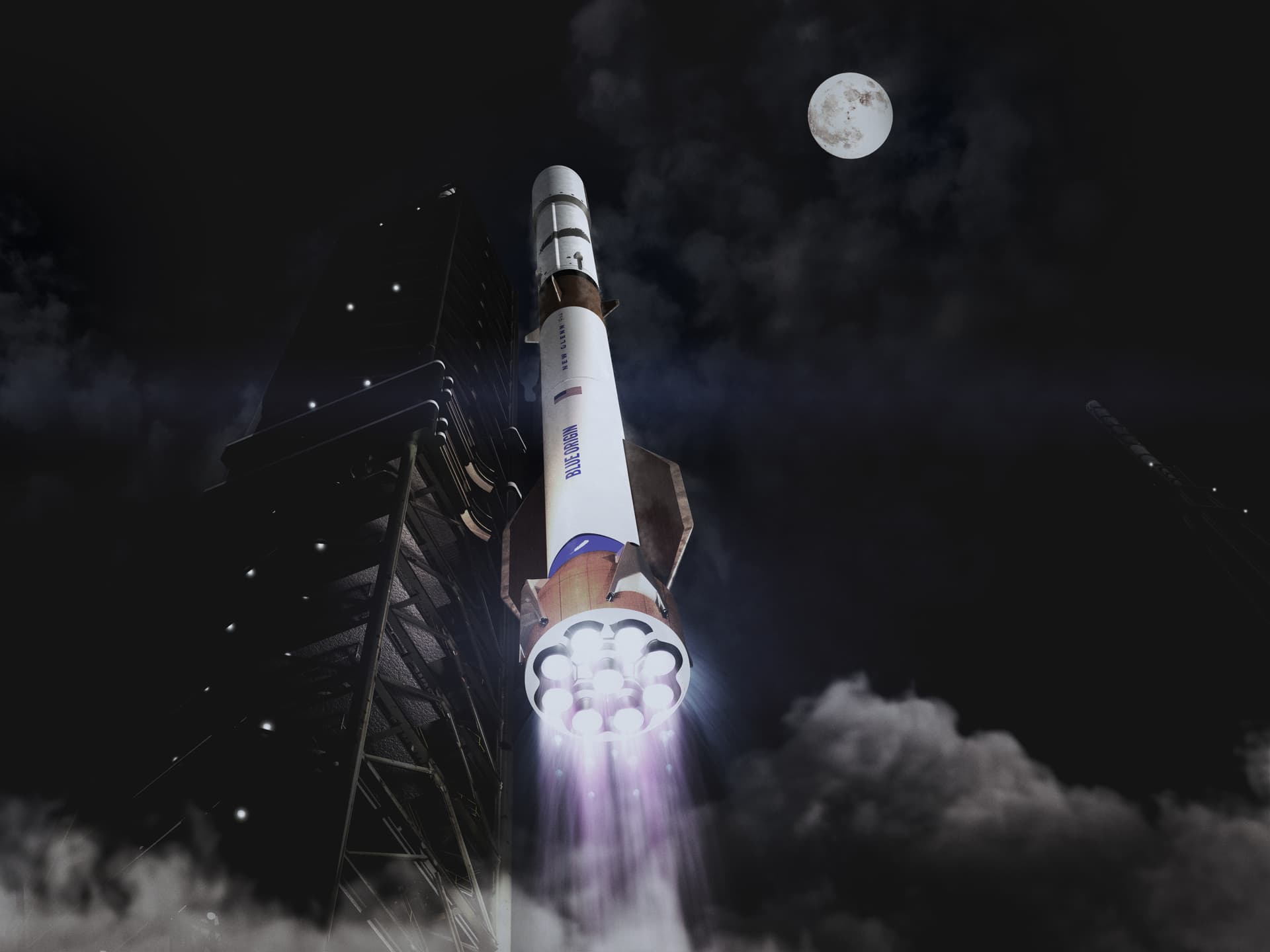Science
Blue Origin Launches New Glenn Rocket, Plans Super-Heavy Version

Blue Origin marked a significant milestone on November 13, 2023, with the successful launch of its New Glenn rocket, designated NG-2. This mission, which carried a NASA payload to Mars, involved the ESCAPADE (Escape and Plasma Acceleration Dynamics Explorers) mission. The ESCAPADE project aims to study how solar wind interacts with Mars’ magnetic environment and influences atmospheric escape.
This launch was particularly noteworthy as it demonstrated the company’s commitment to partial reusability. Blue Origin successfully retrieved the first stage of the New Glenn rocket, showcasing advancements in its design and operational capabilities. Shortly after the launch, Blue Origin announced plans for structural enhancements and upgrades to propulsion, avionics, reusability, and recovery systems for future missions.
Plans for a Super-Heavy Rocket
In an ambitious move, Blue Origin revealed intentions to develop a “super-heavy” version of the New Glenn rocket, likely aimed at competing with SpaceX’s Starship. The proposed rocket, named New Glenn 9×4, will include enhancements such as higher-performing thrusters on both the first and upper stages. Currently, the New Glenn utilizes seven BE-4 booster engines capable of generating a total thrust of 16,800 kN (3.5 million lbf) at sea level. The upgraded engines are expected to deliver 19,928 kN (4.5 million lbf) in total thrust, with each engine producing 2,847 kN (642,850 lbf).
The company also plans to enhance the BE-3U thrusters that power the upper stage. These improvements will increase thrust from the original 1,423 kN (320,000 lbf) to 1,779 kN (400,000 lbf). While the new BE-4 engines are set to debut in the next New Glenn launch (NG-3), integration of the enhanced BE-3U is anticipated over upcoming missions.
Beyond propulsion enhancements, the New Glenn 9×4 will feature a larger payload fairing, measuring 8.7 meters (approximately 28 feet 6.5 inches) in diameter, compared to the current 7-meter (23-foot) fairing. This design will enable the rocket to deliver up to 70 metric tons to Low Earth Orbit (LEO), 14 metric tons to Geosynchronous Orbit (GSO), and 20 metric tons for Trans-Lunar Injection (TLI) missions.
Competing in the Expanding Launch Market
Blue Origin’s plans come amid a rapidly evolving commercial space launch industry, projected to reach a value of $35.95 billion by 2030. The company aims to enhance both rocket performance and launch frequency, ensuring it remains competitive against other emerging launch providers that challenge SpaceX’s previous near-monopoly.
In addition to its commercial endeavors, Blue Origin is set to support NASA’s Artemis Program, specifically for the Artemis V and VI missions. With uncertainties surrounding future missions beyond Artemis III, the proposed FY 2026 Budget Request indicates that NASA may shift to outsourcing launch and crewed spacecraft needs to commercial partners.
Acting NASA Director Sean Duffy has mentioned that the agency will seek competitive bids for a Human Landing System (HLS), citing delays in the development of SpaceX’s Starship. As Blue Origin continues to establish itself in both deep space exploration and national security programs, the company is positioning itself as a key player in the future of space travel.
As Blue Origin advances its New Glenn program and explores new capabilities, its commitment to innovation and competition illustrates a broader transformation in the aerospace industry.
-

 Technology4 months ago
Technology4 months agoDiscover the Top 10 Calorie Counting Apps of 2025
-

 Health2 months ago
Health2 months agoBella Hadid Shares Health Update After Treatment for Lyme Disease
-

 Health3 months ago
Health3 months agoErin Bates Shares Recovery Update Following Sepsis Complications
-

 Technology3 weeks ago
Technology3 weeks agoDiscover 2025’s Top GPUs for Exceptional 4K Gaming Performance
-

 Technology2 months ago
Technology2 months agoElectric Moto Influencer Surronster Arrested in Tijuana
-

 Technology4 months ago
Technology4 months agoDiscover How to Reverse Image Search Using ChatGPT Effortlessly
-

 Technology4 months ago
Technology4 months agoMeta Initiates $60B AI Data Center Expansion, Starting in Ohio
-

 Technology4 months ago
Technology4 months agoRecovering a Suspended TikTok Account: A Step-by-Step Guide
-

 Health4 months ago
Health4 months agoTested: Rab Firewall Mountain Jacket Survives Harsh Conditions
-

 Lifestyle4 months ago
Lifestyle4 months agoBelton Family Reunites After Daughter Survives Hill Country Floods
-

 Technology3 months ago
Technology3 months agoUncovering the Top Five Most Challenging Motorcycles to Ride
-

 Technology4 weeks ago
Technology4 weeks agoDiscover the Best Wireless Earbuds for Every Lifestyle





















